 Your new post is loading...
 Your new post is loading...
The press will destroy Trump and Trump will destroy the press.
Consider that trust in media began falling in the ’70s, coincident with what we believe was our zenith: Watergate. We brought down a President. A Republican President.
Now the press is the nation’s last, best hope to bring down a compromised, corrupt, bigoted, narcissistic, likely insane, incompetent, and possibly dangerous President. A Republican President. Donald Trump.
If the press does what Congress is so far unwilling to do — investigate him — then these two Republican presidencies will bookend the beginning of the end and the end of the end of American mass media. Any last, small hope that anyone on the right would ever again trust, listen to, and be informed by the press will disappear. It doesn’t matter if we are correct or righteous. We won’t be heard. Mass media dies, as does the notion of the mass....
Digital news continues to evolve, pushed by a variety of innovations in recent years, from groundbreaking new technologies like virtual reality and automated reporting to experiments on social platforms that have altered campaign coverage. As journalists and media practitioners gather for the annual Online News Association Conference, here are 10 key findings from recent Pew Research Center surveys and analyses that show how these rapid digital shifts are reshaping Americans’ news habits...
Newsrooms are posting more of their content directly to social media platforms, but with little idea of what the rewards will be.
That insight comes from data presented by researchers at the Tow Center for Digital Journalism at Columbia University last week at a half-day event, “Digital News in a Distributed Environment.” Researchers surveyed more than 40 journalists and news media executives, from both national and local brands, as well as eight executives from Facebook, Twitter, Instagram, Google and Snapchat. They also held a roundtable attended by fifteen social media and audience editors. They found that a publisher’s business model is what determines its social media strategy – and no one solution works, said Claire Wardle, the research director at the Tow Center. While some publishers are optimistic about the new opportunities that social media provides, others feel powerless. And relationships between publishers and platforms are not always amicable, with one respondent referring to a platform as a “frenemy.”...
Ever since the web was invented, newspapers and other media entities have had to continually expand their view of who their competition is: in the good old days it was other newspapers, and then TV, and then after the web it became other news websites, or maybe Yahoo or Google. But even now, their perspective on that competition may still be too narrow — as my friend Om has argued, they are competing with anything that captures a reader’s attention. And I would argue that they are competing with any service that fills an information need.
I started thinking about this again earlier this week, when a link to an old blog post by journalist/programmer Stijn Debrouwere showed up in my Twitter stream, posted and retweeted by multiple people. I couldn’t track down exactly where it came from, but I’m glad it appeared, because it reminded me of how much sense it made in 2012 when it was first published — and how much sense it continues to make.
Debrouwere’s essay is simply called “Fungible.” Fungibility is an economic term that is used to describe products or services that are interchangeable; in other words, if consumers don’t really care whether they get Product A or Product B, then those two things are said to be “fungible.”...
In a recent speech, Guardian deputy editor Katharine Viner described how she believes the social web and the practice of “open journalism” fundamentally changes the relationship that journalists have with their audience...
But the real meat in Viner’s speech is her argument about how all of this changes (or at least should change) the nature of a journalist’s relationship with what Jay Rosen and Dan Gillmor have called “the people formerly known as the audience.”
“Digital is not about putting up your story on the web. It’s about a fundamental redrawing of journalists’ relationship with our audience, how we think about our readers, our perception of our role in society, our status. We are no longer the all-seeing all-knowing journalists, delivering words from on high for readers to take in, passively.”...
...as a group we tend to be arrogant, self-righteous and holier-than-thou (I include myself in this criticism). We tend to view ourselves as high priests of an exclusive profession and bearers of a special ethical standard that few others can live up to. We see ourselves as purer, more objective, less affected by the prejudices of the mere mortals we cover.
That is at least part of the reason we have trouble in the new world of entrepreneurial journalism, where journalists start and run their own news operations. If we want to go out on our own, we have to recognize for the first time that journalism is a business, that someone has to pay the bills and that there is money involved. Money? This is a dirty word for journalists. It makes us blush. We associate it with influence peddling, lobbyists, bribery, corruption and other topics of our investigative journalism.
Here are some other dirty words that entrepreneurial journalists who launch their own media will have to learn how to say without blushing...
... You may have heard of Matthew Keys. He’s a journalist who was indicted by the Department of Justice (DoJ) for allegedly “giving hackers access to the servers of his former employer, the Tribune Company. Tribune owns the Los Angeles Times, which the Anonymous hacker subsequently defaced.” Keys was also, until recently, the social media editor for Reuters. After being let go today, he shared the news organization’s Twitter guidelines – and they demonstrate the dangers of combining personal and professional tweets online. In a blog post, Keys shares reasons why Reuters was mad at him (and fired him) and that list includes the following: "Reuters said it had a problem with the perceived relationship between my Twitter account and their news organization. A Reuters manager said it was troublesome that several people associated my work on Twitter with the company, pointing to my Twitter bio that said I was a Reuters journalist. Reuters’ Twitter Guidelines, which you can read here, states that Reuters journalists are always expected to identify themselves as such"....
When big news breaks, a common impulse is to turn to CNN, but the network suffers from self-inflicted damage. ...So what is the real damage of a midweek stumble in a very complicated story? When the story was breaking on Friday, CNN had its biggest nonelection rating in 10 years. People at CNN said that they got significant blowback from sources, but Mr. Zucker seemed fine with the overall effort, issuing a hero-gram to the staff on Friday, before the final chapter unfolded. “All of you, across every division of CNN Worldwide, have done exceptional work,” the memo read. “And when we made a mistake, we moved quickly to acknowledge it and correct it.” That’s one way to spin it. I talked to several competitors who did not commit the same error, and one spoke for many when he said: “It was bad enough — really, really bad — so that they made all of us look terrible. Nobody comes away a winner from something like this.” If legacy media were falling short, the new order did not look all that promising either. A crowd-sourced witch hunt took place on Reddit, identifying innocents as suspects, and Twitter was alive with both misinformation and outrage at the mistakes. (There were many curiously triumphal posts about the death of old media in Twitter feeds that were full of links to that same old media.)...
Guardian digital development editor Joanna Geary answers some questions about GuardianWitness.... ...First up: this was built in two months. The sponsorship pot from EE gave them a budget and time to get the job done, but not necessarily have everything they wanted at launch. She says it's a complete, working system that can be built upon. I suggest the phrase "minimum viable product" to Jo but she suggests that it's a full product - one that will be built on. Do they have aspirations for more integration with social media? Yes, they do. And it's something they're looking at as the system develops. The key part of the development which is invisible to us right now is that the Guardian Witness system is deeply integrated with the Guardian's CMS. Once the content has passed through verification, it's available to the journalists, and they can insert it into a story or liveblog just by inserting an URL, which creates an embedded version of the contribution that links back to the contributor's profile. "The really exciting thing is not what you see now, but what you see when Witness is included in a story," she says. It's a tool to facilitate genuine collaborative working between the journalist and external witnesses. Jo says they'll collaborate with people on the ground, or with expert knowledge, in any way they can - and already do, via phone and other traditional methods. This adds another tool for doing that....
“Twitter does its best work in the first five minutes after a disaster, and its worst in the twelve hours after that.” - @rolldiggity There is a quiet that descends in a newsroom when a big story breaks.... Twitter has often been touted as the “first with news”. From the miniscule to the massive. From Stephen Fry being stuck in a lift, to the Arab Spring rippling across North Africa, it is the instant source of a story, the first gurgle from a tap. The only way to find out what’s really happening, according to some. But I’m beginning to think that so-called truth is losing some of its polish. I follow about 700 people on Twitter. I actually “watch” about three times that amount. I have lists of people I don’t follow. In other words, I can see them, without having to follow them. News people, experts, specialists, comedians, doctors, police officers, bloggers and bohemians. I’ve been on Twitter for more than three years. I like to think I’ve found much of the gold within its mines. When the first tweets about the Boston marathon explosions popped up in my timeline, I went over to my newsroom colleagues. I told them what was happening. And the process began. And I watched Twitter....
... News is irrelevant. Out of the approximately 10,000 news stories you have read in the last 12 months, name one that – because you consumed it – allowed you to make a better decision about a serious matter affecting your life, your career or your business. The point is: the consumption of news is irrelevant to you. But people find it very difficult to recognise what's relevant. It's much easier to recognise what's new. The relevant versus the new is the fundamental battle of the current age. Media organisations want you to believe that news offers you some sort of a competitive advantage. Many fall for that. We get anxious when we're cut off from the flow of news. In reality, news consumption is a competitive disadvantage. The less news you consume, the bigger the advantage you have....
...For the past few years, we as an industry have been asking (often with great consternation): What is a digital magazine? All of the magazine titles I mentioned are answering this question differently. Some have created a news feed. Others, a video channel. Many repurpose their print articles into blog posts. The smart ones have created a searchable archive of past issues. A few just beg you to download their app. When we ask the question that way, we open the floodgates to all sorts of slop that is decidedly un-magazine. The typical guru’s answer involves heavy-handed social media. And push notifications. And monetizing your online channel by paginating just below the fold, capitalizing on viral lift, and recalibrating expectations to include a mix of advertorial content and strategically placed calls-to-action powered by a new algorithm to maximize synergistic opportunities.
Gross....
When a helicopter crashed in a densely populated part of London around 8am today, next to one of the busiest trainlines in Europe and a large bus station, the news was always going to be broken, within seconds, by members of the public on Twitter, armed with camera phones.
Twitter user Craig Jenner was one of the first to put a picture on Twitter which was shared far and wide.
What happened next is indicative of the way the media are increasingly playing catch-up on such stories, moving from reporting to aggregating (or curating, if you must) - images, eye-witness accounts and videos. Journalists were asking to use the picture with a credit and were trying to get Jenner on the phone...
|
The 2016 election exposed a significant crisis for U.S. democracy: the failure of our news media system.
This was an election in which false news was consumed as if true; in which polls were significantly off-base; in which journalists missed the stories both of Trump supporters, who came out in unanticipated numbers, and former Obama voters, who defied predictions to stay home.
The easy response, in the wake of these multiple failures, is to focus on one specific weakness. If only journalists had interviewed more white people in the Rust Belt! If only pollsters had looked at a different data-set! If only Facebook were not so dominant, or fake news sites so plentiful…
Such essays in search of simple answers represent no more than collective wishful thinking. Systemic failures have systemic causes. Repairs to the system may not be enough. We need to put time and resources now into transforming our news media system.
Why did we not know that voters in the Rust Belt were willing to vote for an anti-regulation racist populist, even when doing so might go against their values and self-interests? Likewise, why did news organizations fail to anticipate what appears to be a lower turnout of black voters in North Carolina (with its new voter suppression laws)?
It’s not that journalists in those communities were not doing their job; it’s that there are very few journalists left to tell the stories of those communities....
What if, in the mad dash two decades ago to repurpose and extend editorial content onto the Web, editors and publishers made a colossal business blunder that wasted hundreds of millions of dollars? What if the industry should have stuck with its strengths—the print editions where the vast majority of their readers still reside and where the overwhelming majority of advertising and subscription revenue come from—instead of chasing the online chimera? That’s the contrarian conclusion I drew from a new paper written by H. Iris Chyi and Ori Tenenboim of the University of Texas and published this summer in Journalism Practice. Buttressed by copious mounds of data and a rigorous, sustained argument, the paper cracks open the watchworks of the newspaper industry to make a convincing case that the tech-heavy Web strategy pursued by most papers has been a bust. The key to the newspaper future might reside in its past and not in smartphones, iPads and VR. “Digital first,” the authors claim, has been a losing proposition for most newspapers....
You could argue that it doesn’t matter. That these journalists are well established and don’t need online audiences. Perhaps. But I think they’re missing out on the medium that allows you to broaden your scope of thinking, test ideas in an online marketplace and allow fans to have a small sliver of unfiltered access to you. It’s a two-way world. Too many NY Times oldline journos are one-way. Shame. And when you look at the 43 people Brooks follows it’s probably about 35 of his fellow NY Times colleagues. And Marc Andreessen. At least there’s that. Marc, maybe you can break through?...
Today it was revealed that Vox Media, owner of The Verge, SB Nation, and Polygon has raised another $40 million of funding.
...But bigger exits are emerging: There was Huffington Post and Bleacher Report. There’s that Vice valuation. And even Swisher and Mossberg without a site are rumored to be in the $30 million valuation size — bigger than what TechCrunch sold for after six years. A pattern is forming.
The investments in Buzzfeed and Vox in particular show that well-heeled investors believe that new media can be more than just profitable lifestyle businesses buoyed by non-scalable event franchises. These guys are betting there are big public companies here.We’re seeing the same kind of transition with content that we saw with the early Web 2.0 companies like Delicious and Flickr. They sold out cheap at first as projects morphed into companies and then the next generation thought bigger....
Hal Varian, Google’s chief economist, talked about the challenges facing the newspaper business in a recent presentation in Italy, and showed that he understands those challenges better than most media executives.
Gawker is about $80,000 into a cheeky scheme to raise a couple hundred grand to pay some drug dealers for a video that allegedly shows Toronto Mayor Rob Ford smoking crack. The “Crackstarter” campaign has caught some flak on ethical grounds – some people are uncomfortable with the idea of a news organization paying drug dealers for anything – but put those concerns aside and you can see that Gawker’s experiment presents a pretty useful case study for the idea of crowdfunding journalism....
A crowdsourced hunt for the bombers was unambiguously counterproductive ...There’s an art to working out where to find fast and reliable information, and to judging new information in light of old information, and to judging old information in light of new information. And there’s an art to synthesizing everything you know, from hundreds of different sources, into a single coherent narrative. It’s not easy, it’s not a skill that most people have, and it’s precisely where news organizations add value.
But in this particular case, as Noah Brier points out in a post headlined “Being Part of the Story”, it’s something that millions of people ended up attempting to do, on the fly, anyway: "Everyone wanted to be involved in “the hunt,” whether it was on Twitter and Google for information about the suspected bomber, on the TV where reporters were literally chasing these guys around, or the police who were battling these two young men on a suburban street. Watching the new tweets pop up I got a sense that the content didn’t matter as much as the feeling of being involved, the thrill of the hunt if you will. As Wasik notes, we’ve entered an age where how things spread through culture is more interesting than the content itself."
Yesterday I quoted my old boss at the New Statesman. Today it’s Jon Snow, Channel 4 News presenter and Charlie Beckett who now runs Polis at the London School of Economics and was previously a programme editor at Channel 4 News. Both had interesting things to say about the evolution of news in the networked age. Both were talking heads in the final part of Steve Richards’ Making News series on Radio 4....
Today’s annual report on the State of the News Media shows that new technologies really are pressing journalists to do much more with much less. Last week, we learned that newspaper industry ad revenue was down 7.3 percent this year to its lowest level since 1984 (or 1954, adjusted for inflation). As a result, newsrooms continue to shrink. But The Project For Excellence in Journalism’s report shows us that the needs and demands of the audience are growing and fragmenting. Social media is an important source of news, the report says, but remains smaller and only “supplemental” to other discovery methods like directly visiting a news website, searching the Web or browsing an aggregator....
TV and social media coverage of Boston bombings was repetitive and speculative. The story will unfold in coming days.... The Steve Silva boston.com footage of the Boston marathon finish line explosion is the new World Trade Tower plane implosion is the new Zapruder tape. Another national horror leaves a scar. We know the drill: The moment of violent disruption, the sense of shock oddly mediated by the screen, replayed endlessly — now on every platform. The repeated images become mere images, first shocking then numbing. At some point, perhaps to distance ourselves from the pain, we focus on the conflicting reports of the smallest detail: how many seconds elapsed between the first explosion and the second? First we heard “a few.” Then a more definitive “13 seconds.” Then “between 10 and 20.” Every network had a different count. At some point we started counting ourselves, timing the moments with every replay. Could’ve been 13, but the speed of sound is faster than the speed of video, isn’t it? We were told that cell service was disrupted so as not to set off additional bombs. That report was then retracted. We heard the JFK Library had a third bomb. That report later knocked down. A suspect was held at Brigham and Women’s Hospital. Authorities later said not so. More unexploded bombs? Maybe, maybe not. Information moves faster than knowledge and still the finish-line explosion footage rolls....
Striking the right balance on social media channels can be difficult enough, but what if your brand is behind a pay wall? The Drum chats to the Financial Times’s social media manager Rebecca Heptinstall and communities editor Sarah Laitner about why the brand is still with the times as it celebrates its 125th year.Is there a certain platform you prefer working on? Rebecca Heptinstall: Twitter is very much the Financial Times’s favoured social network in sheer community size (2.75m) and traffic to FT.com. That’s not to say that other social networks aren’t important, they certainly are – for example, we were the first newspaper to reach 1m followers on Google+ in July 2012. We’re also figuring out what platforms fit with the brand as and when they pop up – for us it’s less about being everywhere and more about being represented well in a few places....
...As more people in any given newsroom are publishing to social platforms — andas more people bypass the homepage and instead use Twitter and Facebook as the entry point to any given news site — analytics companies see new opportunities to help media companies leverage real-time social data. Visual Revenue, a predictive analytics firm that focuses exclusively on media companies, is this morning rolling out a bundle of tools to help editors measure the effectiveness of social publishing in real time. “So, if you push a story right now on Nieman Lab, 40 clicks into it you might see 17 retweets, two favorites, some manual retweets and that’s all great, actually,” Visual Revenue CEO Dennis Mortensen told me. “But how do you really add all of it up?”...
|



 Your new post is loading...
Your new post is loading...




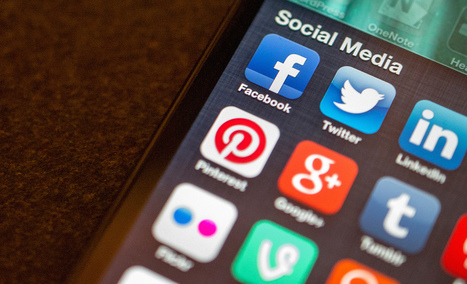


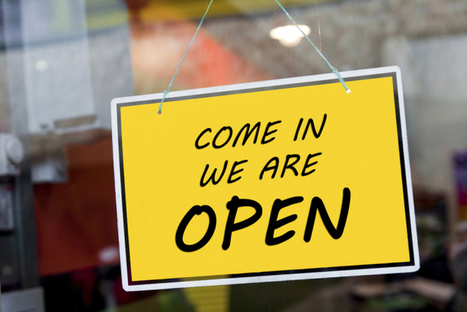



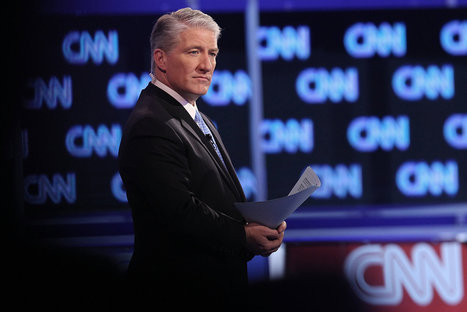
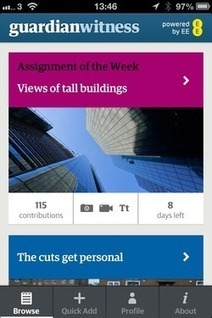


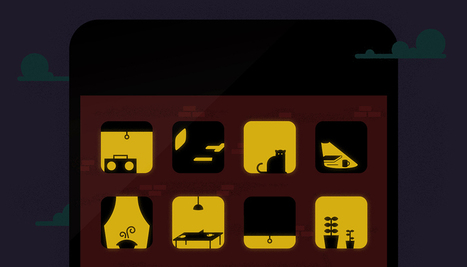




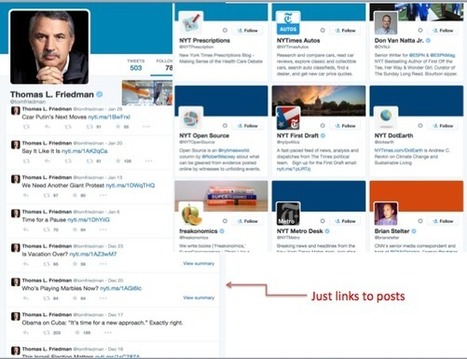
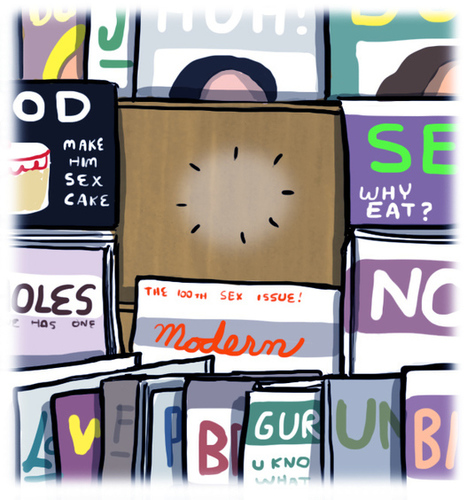

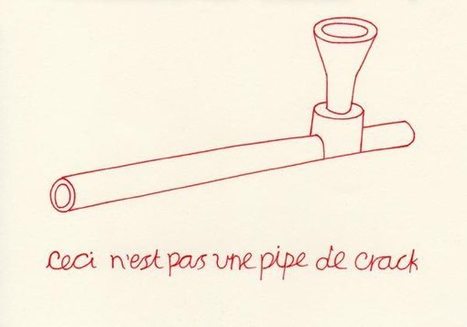


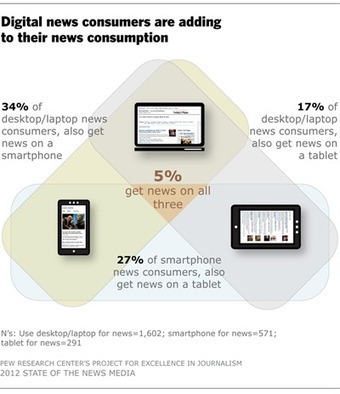








Jeff Jarvis writes a powerful post about the death spiral of Trump and the media.